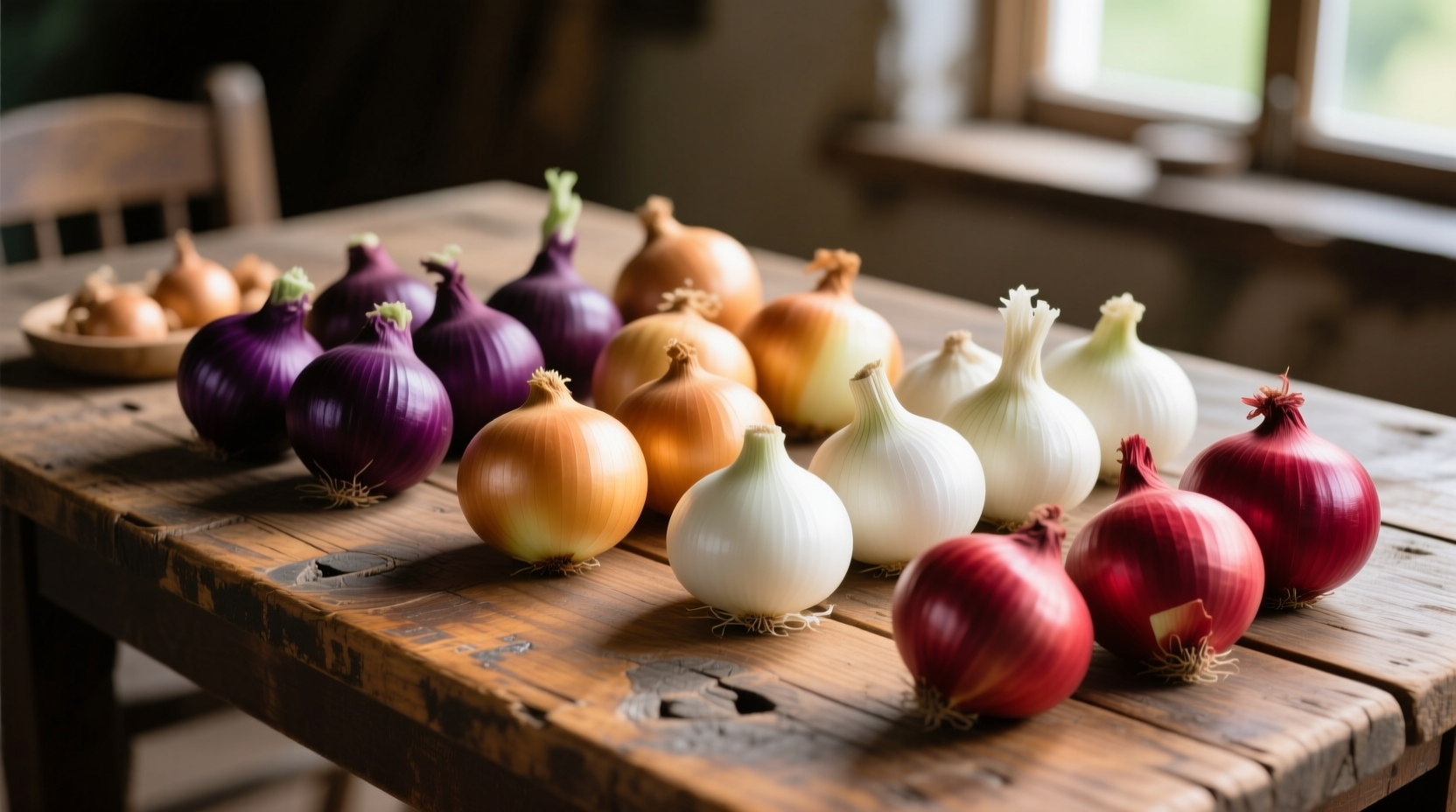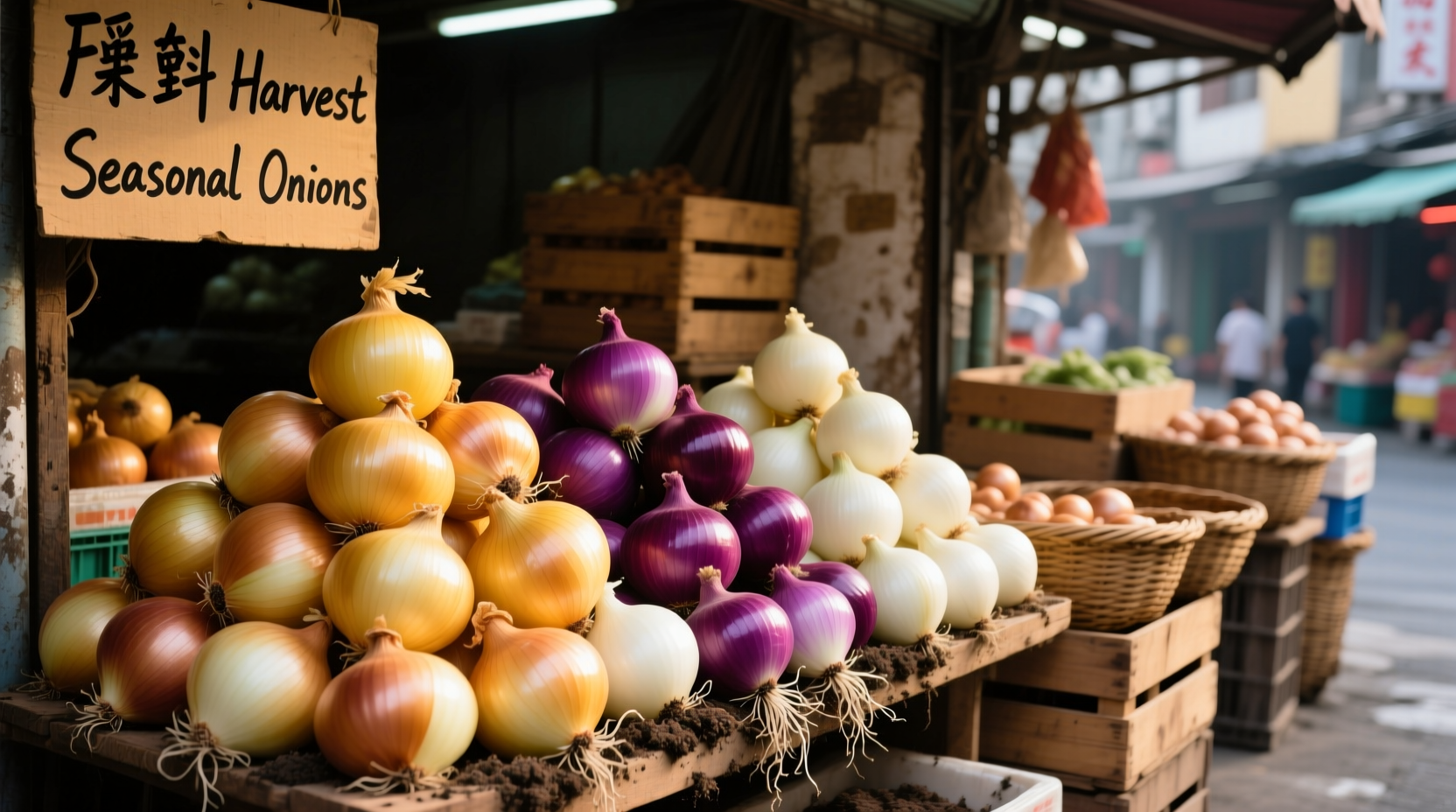When searching for "onion store," many home cooks and professional chefs seek specialty retailers that provide high-quality onion varieties often unavailable in conventional supermarkets. These specialty sources offer distinct advantages including seasonal heirloom varieties, superior freshness, and expert guidance on proper selection and storage techniques that dramatically impact culinary outcomes.
Understanding Onion Varieties and Their Culinary Applications
Not all onions serve the same purpose in cooking. Specialty retailers typically carry a wider selection that caters to specific culinary needs. The right onion variety can transform a dish from ordinary to exceptional, making understanding these differences essential for serious cooks.
| Onion Variety | Flavor Profile | Best Culinary Uses | Seasonal Availability |
|---|---|---|---|
| Yellow Storage Onions | Strong, pungent when raw; sweet when cooked | General cooking, caramelizing, roasting | Year-round (stored) |
| Vidalia Sweet Onions | Mild, sweet, low sulfur content | Raw applications, salads, sandwiches | March-August |
| Red Onions | Sharp when raw, slightly sweet when cooked | Pickling, salads, grilling, garnishes | Summer through early winter |
| Shallots | Delicate, subtle garlic-onion flavor | Vinaigrettes, sauces, delicate dishes | Year-round (stored) |
| Green Onions/Scallions | Mild, fresh, grassy | Garnishes, stir-fries, raw applications | Spring through fall |
This comparison highlights why specialty onion retailers matter—they provide access to specific varieties when they're at peak freshness and flavor, something conventional grocery stores often cannot match due to standardized supply chains.
How to Select Quality Onions at Specialty Retailers
When visiting an onion store or specialty produce market, knowing what to look for ensures you bring home the best product. The USDA Agricultural Marketing Service provides specific quality standards that reputable onion retailers follow, which you can use as your selection guide.
For storage onions (yellow, red, white), choose bulbs that are:
- Firm with dry, papery outer skins
- Free from soft spots, mold, or sprouting
- Heavy for their size (indicates moisture content)
- Without visible neck damage
Sweet onions like Vidalias require more careful inspection as their higher water content makes them more perishable. Look for bulbs with minimal neck tissue and no signs of moisture on the skin, which indicates potential spoilage.

Proper Storage Techniques for Maximum Freshness
Improper storage accounts for more wasted onions than any other factor. The National Onion Association recommends specific storage conditions based on onion type, which specialty retailers can advise on but many consumers overlook.
Storage guidelines:
- Dry storage onions: Keep in a cool, dark, well-ventilated area between 45-55°F (7-13°C) with low humidity
- Sweet onions: Refrigerate in the crisper drawer with high humidity settings; use within 2-3 weeks
- Green onions: Trim roots, store upright in water in the refrigerator, changing water every 2-3 days
- Never store onions near potatoes—they release gases that accelerate each other's spoilage
Specialty onion retailers often provide specific storage instructions tailored to their particular varieties, which can extend shelf life by weeks compared to standard grocery store recommendations.
Finding Reputable Specialty Onion Retailers
Locating quality onion sources requires knowing where to look and what questions to ask. The most reliable specialty onion retailers typically have these characteristics:
- Direct farm relationships: Many specialty retailers work directly with growers, allowing them to source specific varieties at peak harvest
- Seasonal rotation: They adjust their offerings based on what's actually in season rather than relying solely on stored inventory
- Knowledgeable staff: Employees can explain flavor differences and recommend varieties for specific cooking applications
- Transparency about origin: They provide information about where and how the onions were grown
According to agricultural extension data from Cornell University's College of Agriculture and Life Sciences, locally sourced onions typically retain 30-40% more flavor compounds than those transported long distances, explaining why specialty retailers focusing on regional produce often provide superior culinary results.
Seasonality and Regional Availability
Understanding onion seasonality transforms your cooking throughout the year. Unlike grocery stores that rely on stored onions year-round, specialty retailers follow the natural harvest calendar:
- Spring: Green onions, scallions, and early sweet varieties
- Summer: Fresh sweet onions (Vidalia, Walla Walla), red onions at peak flavor
- Early Fall: Harvest of storage onions (yellow, red, white)
- Winter: Stored onions at their sweetest after proper curing
The flavor profile of onions changes significantly throughout the storage season. As noted in research published by the Journal of Agricultural and Food Chemistry, properly stored onions develop sweeter, more complex flavors over the first 2-3 months after harvest due to natural sugar conversion processes.
Common Misconceptions About Onion Quality
Several myths persist about onion selection and usage that specialty retailers can help clarify:
- "Larger onions are always better": Size doesn't indicate quality—smaller onions often have more concentrated flavor
- "All onions can be used interchangeably": Different varieties have distinct chemical compositions affecting how they behave in cooking
- "Onions last indefinitely in the pantry": Even storage onions degrade in quality after 2-3 months under ideal conditions
- "Sweet onions are just regular onions with sugar added": Sweetness comes from lower sulfur compounds naturally present in specific varieties
Specialty onion retailers provide valuable education that helps cooks understand these nuances, ultimately improving their culinary results through better ingredient selection.
Practical Tips for Maximizing Onion Flavor in Your Cooking
Working with a knowledgeable onion retailer provides more than just product selection—they offer practical cooking advice based on the specific characteristics of their inventory:
- Cutting technique matters: Cut across the grain for milder flavor, with the grain for stronger flavor
- Soaking effects: Briefly soaking sliced onions in ice water reduces pungency for raw applications
- Caramelization secrets: Adding a pinch of baking soda lowers pH, accelerating caramelization (use sparingly)
- Flavor pairing: Different varieties complement specific proteins and vegetables
These practical insights, often shared by specialty retailers, help home cooks achieve restaurant-quality results through proper ingredient handling techniques.











 浙公网安备
33010002000092号
浙公网安备
33010002000092号 浙B2-20120091-4
浙B2-20120091-4